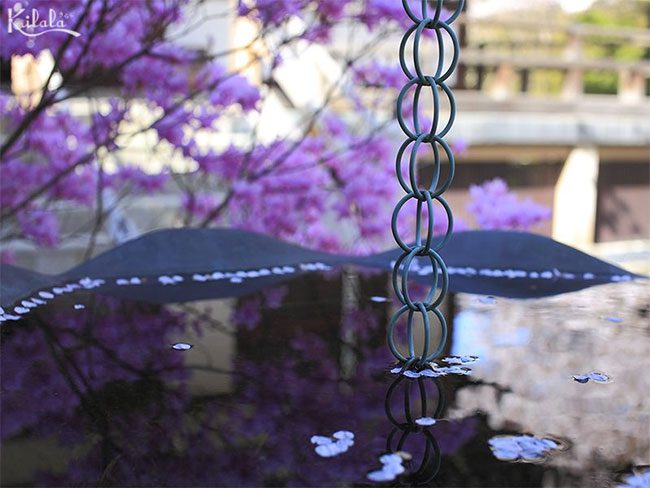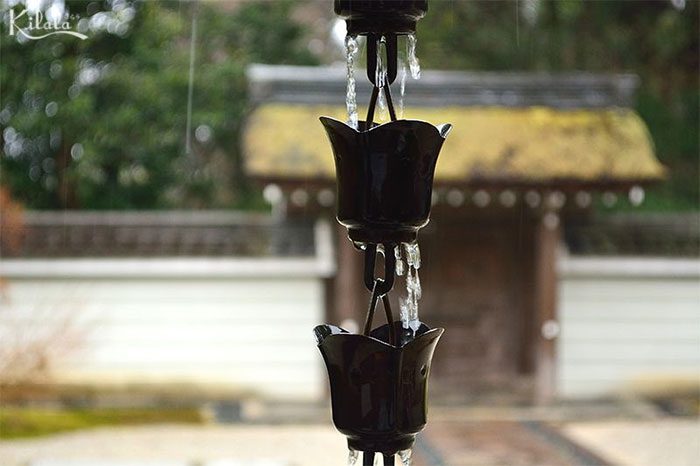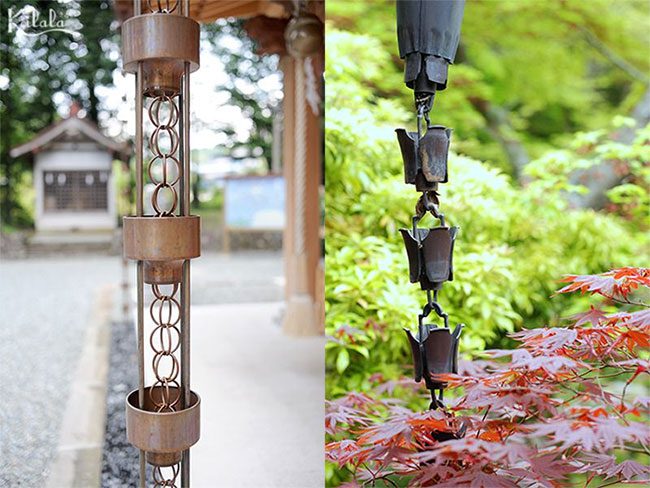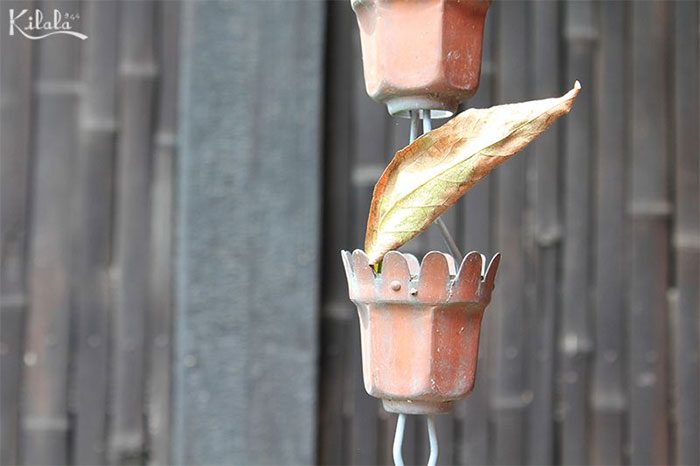The gentle rains of the Land of Cherry Blossoms are adorned in a unique way by the Japanese with Kusari – toi rain chains, making the rain in Japan more delicate and romantic.
What is a Rain Chain?
If you have the opportunity to travel to Japan during the rainy season, you may occasionally encounter long chains swaying before traditional houses or Shinto shrines. When the rain falls, if you pause for a moment, you will hear the delightful sound of water trickling through these chains. The name for them is equally intriguing – rain chains.

Rain Chain in Japan.
These are long chains attached to the eaves of houses, primarily designed to direct and collect rainwater. In Japanese, a rain chain is written as 鎖樋, pronounced “kusari – toi” or “kusari – doi”, and is translated into English as “rain chain” or “chain gutter”, while in Vietnamese, it is simply referred to as “sợi mưa.”
Origin and Development
The rain chain first appeared during the Azuchi-Momoyama period (1558 – 1600), when a specific architectural style for tea houses (dedicated spaces for tea ceremonies) known as Sukiyazukuri emerged. The leaders of the tea ceremony community chose a rustic aesthetic for tea houses over a more extravagant style, which is why the rain chains used to hang from bamboo or wooden gutters outside tea houses were made from the outer bark of hemp, braided into strands called Shuro – nawa.

Raindrops creating flowing water sounds.
Shuro – nawa functions similarly to modern downspouts but differs in that conventional drainage pipes conceal the flowing water inside, while rain chains provide a visual delight as water flows clearly from the roof to the ground. Traditional Shuro – nawa is still used today at the entrance of the Hachiroemon Mitsui house, built by the 11th-generation leader of the Mitsui family, Takakimi Mitsui, which has since been relocated to the Edo-Tokyo Tatemono En Museum (Koganei Park, Tokyo).

Various types of rain chains.
As time passed and technology advanced, bamboo or wooden gutters were gradually replaced by metal materials, and metal rain chains became increasingly popular, particularly those with bowl-shaped reservoirs that effectively directed rainwater.
Originally designed as decorative elements for traditional Japanese homes, rain chains began to be integrated into modern Western architecture about half a century ago. The number of traditional homes using rain chains has decreased, while they are increasingly found in contemporary designs with diverse and rich styles.
Aesthetic Beauty and Lively Sound Effects
Instead of using large and bulky pipes to channel water as is commonly seen, the Japanese have simplified their water diversion tools to be lightweight and convenient, achieving both efficiency and high aesthetic value.
Today, rain chains are used more for decorative purposes than for water storage, available in both long and short styles, with or without water reservoirs below. The diverse designs of rain chains, ranging from simple to intricate, not only make the selection and decoration of architecture much more interesting but also provide homeowners with an opportunity to express their unique style.

Image of a rain chain.
The installation of rain chains is also incredibly simple; all that is required is to secure the chain to the gutter with a specific hook, and it is ready for use. Thanks to these advantages, rain chains have become very popular and are increasingly common in many countries around the world.
In Shinto shrines across Japan, one often sees rain chains hanging in front of the roofs, swaying gently with the breeze. When raindrops fall, amidst the sacred silence of the shrine, observing the rain chains and listening to the gentle trickling sound of water flowing through each link and into the reservoir below can unexpectedly wash away all worries along with the water.


















































